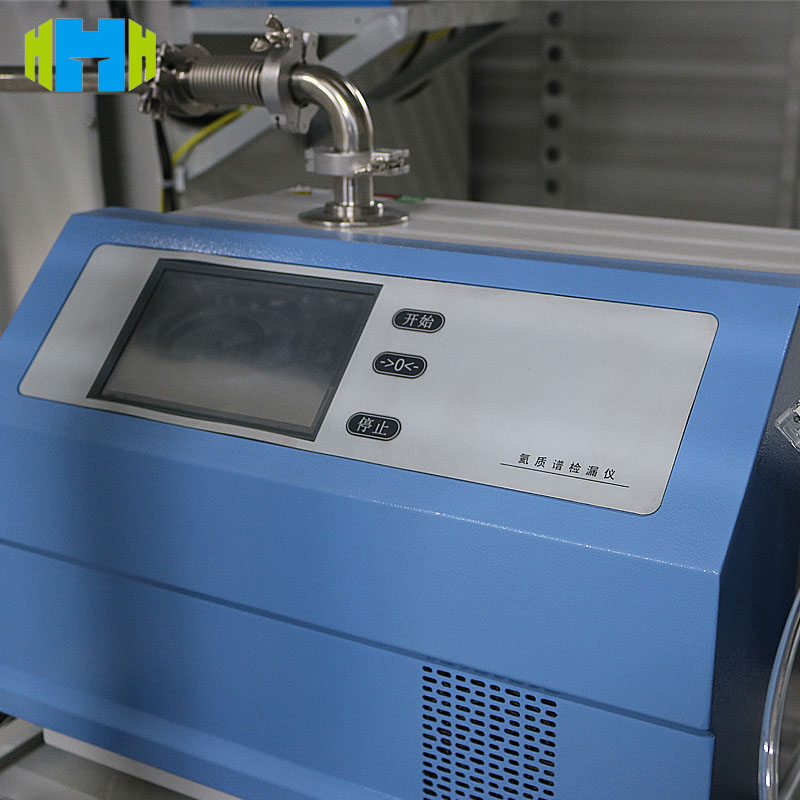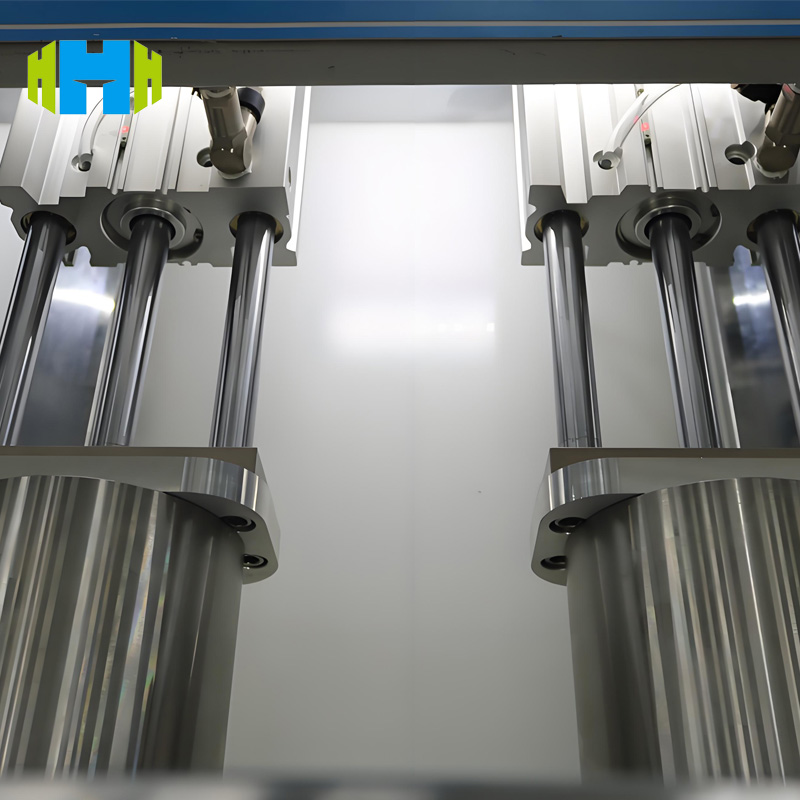What Are You Looking For?
What Are You Looking For?
Metal bellows vacuum chamber helium leak detection equipment can detect extremely small leaks with high sensitivity, ensuring the tightness of the metal bellows vacuum chamber during use, which is crucial to ensuring the accuracy of various processes and experiments in a vacuum environment.
Item No. :
HJ152Minimum Order Quantity (MOQ) :
1 setPayment Method :
L/C,T/T,PayPalPrice :
NegotiatableProduct Origin :
TürkiyeSupply Ability :
1 sets per 2 monthLead Time :
60 Working DaysConventional packaging :
PlywoodAuto parts metal bellows vacuum chamber helium leak detection equipment
Product Features:
High sensitivity:Adopting advanced helium detection technology, it can detect extremely small helium leakage rate.
Good selectivity:It is highly selective for helium and will not be interfered by other gases. It can accurately detect helium leakage even in complex gas environments.
Fast response speed:It has a fast response time. Once there is a helium leak, it can be quickly displayed in the detection system
Reliable and stable:The equipment structure is reasonably designed, and the key components are made of high-quality materials and advanced manufacturing processes, which ensures long-term stable and reliable operation and reduces failures and false detection rates.
Easy to operate:Equipped with an intuitive human-machine interface, the operator can easily set the detection parameters, start and stop the detection process, and the equipment has an automated detection process, which reduces the technical requirements for the operator.
Safe and environmentally friendly:Helium itself is an inert gas, which has little harm to the environment and human body. At the same time, the equipment is designed with the safe use and recovery of helium in mind, reducing gas waste and potential safety hazards.
Technical Parameters:
| Projects | Parameters |
| Number of stations | Double/multiple stations |
| Product fixture | Customized fixture according to the product |
| Sealing method | vacuum chamber clamp seal |
| Detected gas | Helium |
| Production time | 1min/ piece |
| Helium recovery rate | more than 80% |
| Size | 2500mm*3000mm*2200mm |
| Weight | 2000KG |
Application field:
Aerospace field:
Used to test the tightness of metal bellows vacuum chamber in aero engine, spacecraft propulsion system and other key components. These components operate in high vacuums, extreme temperatures and pressures, and any small leak can lead to serious consequences, such as affecting engine performance or compromising flight safety.
Electronic semiconductor industry:
In the process equipment of vacuum coating and etching in the process of chip manufacturing, the sealing of the vacuum chamber of metal bellows is very important to ensure the process quality. The device ensures that these vacuum chambers are leak-free to improve the yield and performance of chip manufacturing.
Vacuum test equipment:
All kinds of vacuum experimental devices for scientific research, such as particle accelerator vacuum system in high-energy physics experiments, vacuum heat treatment equipment in material science research, etc., the metal bellows part needs to be strictly leak tested to maintain a stable vacuum environment for accurate experiments.
Industrial vacuum System:
The metal bellows vacuum chamber in vacuum drying, vacuum distillation, vacuum packaging and other equipment widely used in industrial production can be detected by this equipment to avoid problems such as reduced production efficiency and product quality caused by leakage.
Detail drawing of the device:


Use tips:
Preparation before testing:
Ensure that the surface of the metal bellows vacuum chamber being tested is clean and free of impurities such as oil and dust, as these may affect the helium adsorption and leak detection results.
Check that the connecting pipes of the equipment are well sealed, that each valve is working properly, and that the helium supply is sufficient and the pressure is stable.
Preheat and calibrate the equipment, and set the appropriate detection parameters such as detection sensitivity, vacuum degree, etc. according to the operation manual.
Detection process:
Moderately spray helium near possible leakage sites (such as welds and joints of bellows, etc.) (if it is a suction gun test) or fill the vacuum chamber with appropriate amount of helium (if it is a vacuum mode test), and pay attention to the amount of helium and the spraying method should be uniform and stable.
Observe the change of the display data and signal of the detection device. When there is an abnormal signal, the detection can be repeated several times to confirm whether it is a real leak. If there are multiple suspected leakage points, you can gradually investigate, for example, starting with the most vulnerable parts.
In the process of detection, the detection environment should be kept relatively stable to avoid external air flow, vibration and other factors interfering with the detection results.
Post-detection processing:
After the test is completed, close the helium supply valve in time to clean and maintain the equipment. For example, cleaning the possible residual helium in the connecting pipes and checking the various components of the equipment are in order to prepare for the next inspection.
If a leak is detected, the repaired vacuum chamber needs to be tested again to ensure that the repair is effective and no new leaks have been introduced.
FAQ:
Question 1: The device shows a leak, but the actual inspection cannot find the leak point. What may be the reason?
Answer: There may be helium residue or interference in the detection environment, such as helium accumulation in the surrounding environment during the previous detection. It may also be that the equipment has misjudged and needs to be recalibrated to check whether the detection parameters are correct. At the same time, the surface of the object being detected can be cleaned again and the possible leakage site can be carefully reviewed.
Question 2: What should be paid attention to in the safe use of helium?
Answer: Although helium is an inert gas, it may cause suffocation in a high concentration environment. During use, ensure that the detection area is well ventilated to avoid helium accumulation in a confined space. At the same time, pay attention to the pressure safety of the helium supply system to prevent helium leakage from uncontrolled situations such as pipeline rupture.
Question 3: What should I do if the detection sensitivity of the equipment decreases?
Answer: First check whether the vacuum system is working properly and whether the vacuum degree meets the requirements, because low vacuum degree will affect the detection sensitivity. It is also necessary to check whether the sensor of the leak detector is aging or contaminated. If so, the sensor may need to be replaced or cleaned. In addition, check whether there are slight leaks in the connecting pipes and interfaces, as this may cause the helium leakage signal to be diluted, thereby reducing sensitivity.
Question 4: For metal bellows vacuum chambers with complex shapes, how to ensure comprehensive detection?
Answer: The method of partition detection can be used to divide the vacuum chamber with complex shapes into several relatively independent areas for helium spraying and detection. At the same time, multiple detection modes can be combined, such as first performing overall vacuum helium filling detection, and then performing suction gun detection on key suspicious areas to ensure that no possible leakage points are missed.
Hot Tags :